#Hungarian Revolution
Photo
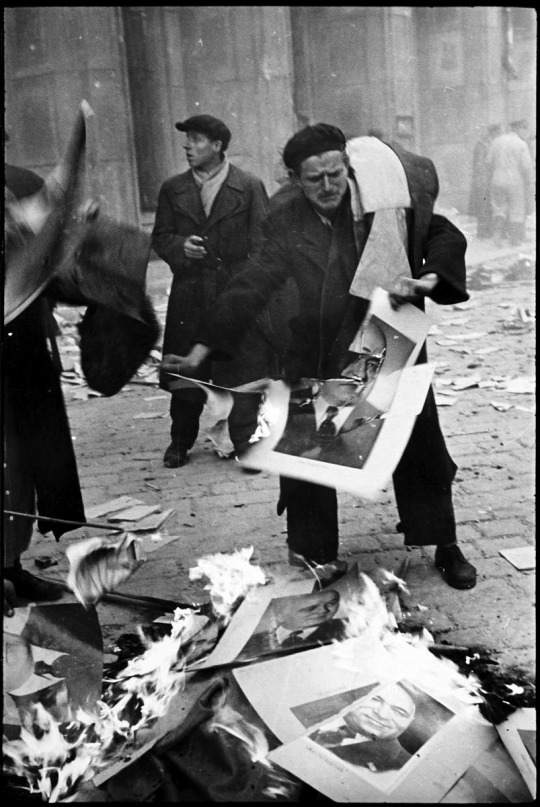
Erich Lessing. Hungarian Revolution. Budapest. 1956
I Am Collective Memories • Follow me, — says Visual Ratatosk
#BW#Black and White#Preto e Branco#Noir et Blanc#黒と白#Schwarzweiß#retro#vintage#Erich Lessing#Hungarian Revolution#Budapest#1956#1950s#50s#Hungary#history#histoire#história#Geschichte#歴史#historical#historisch#histórico#historique
193 notes
·
View notes
Photo

A group of Hungarian freedom fighters patrol ruined streets during the 1956 Hungarian Revolution.
117 notes
·
View notes
Text
Instead of retelling the hungarian revolution of 1848 over and over again
We should use the Roman method and put a knife in the dictator or something
Spice it up a little
#ides of march#march 15#hungarian revolution#március 15#who's with me#happy ides of march#for legal reasons this is a joke#hungary
25 notes
·
View notes
Text

Hungarian-Americans march up Fifth Avenue on November 4, 1956 in what was called a “March of Mourning” for those dead in the failed revolt against the Soviet Union. Many carry signs, such as the one in foreground, “Communist murderers get out of Hungary.” The marchers are at 57th street, walking south on Fifth Avenue.
Photo: Associated Press
#vintage New York#1950s#Hungarian uprising#Hungarian Revolution#1956 Hungarian revolt#Nov. 4#4 Nov.#protest march#anti-Soviet#vintage NYC#5th Ave.
28 notes
·
View notes
Photo

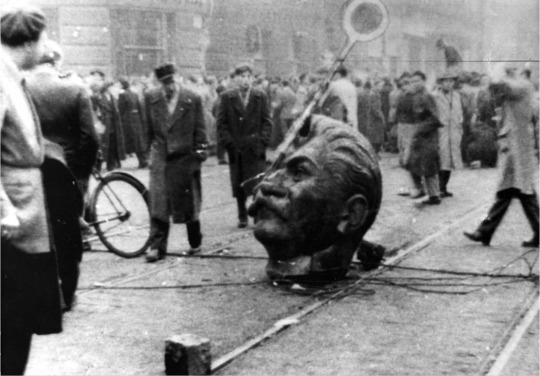
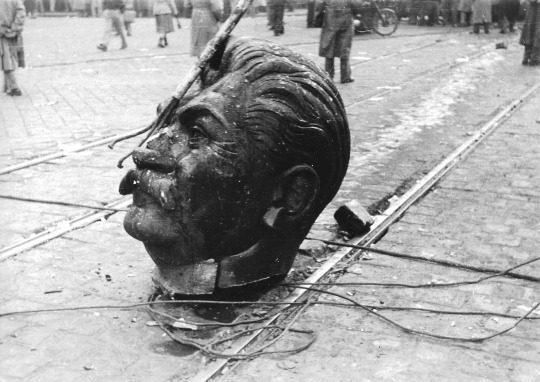
A disembodied statue of Joseph Stalin's head on the streets of Budapest during the Hungarian Revolution, 1956
Stalin’s monument was torn down on October 23, 1956, by enraged anti-Soviet crowds during Hungary’s October Revolution.
#disembodied#statue#Joseph Stalin's head#streets#Budapest#Hungarian Revolution#1956#50's#50s#monument#October 23 1956#anti-Soviet crowds#Hungary’s October Revolution#stalin#joseph stalin#black and white photography#photography#photo#history
125 notes
·
View notes
Photo

Stalin’s boots, Fifty-six square, Budapest, 1956. From the Budapest Municipal Photography Company archive.
157 notes
·
View notes
Text

Silk, oil, jam and petrol - practical & affordable ways to destroy a soviet tank
5 notes
·
View notes
Text
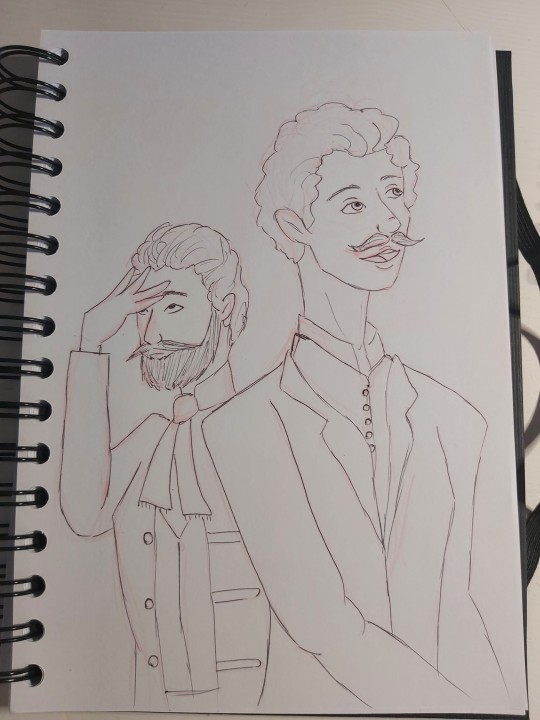
My contribution to the nonexistent Hungarian Revolution Fandom.
Már eltelt egy hét. Csinálhatunk Most vagy Soha fanartot!
#fanart#history fandom#history fanart#hungarian revolution#1848#magyar történelem#magyar tumblr#perőfi sándor#jókai mór#most vagy soha!
4 notes
·
View notes
Photo

Erich Lessing. Hungarian Revolution. Budapest. 1956
I Am Collective Memories • Follow me, — says Visual Ratatosk
#BW#Black and White#Preto e Branco#Noir et Blanc#黒と白#Schwarzweiß#retro#vintage#Erich Lessing#Hungarian Revolution#Budapest#1956#1950s#50s#history#histoire#história#Geschichte#歴史#historical#historisch#histórico#historique
34 notes
·
View notes
Text

Soviet IS-3 rapidly disassembled during the 1956 Hungarian Revolution
24 notes
·
View notes
Text

15yr old Jewish revolutionary, Erika Kornélia Szelesand, armed with a PPSh-41 was a freedom-fighter and nurse during the Hungarian Revolution against the Soviet Union in 1956.
Her photo was taken by Danish photographer Vagn Hansen, her photo graced the covers of several European magazines. She was killed by Soviet/Russian troops a week later, on November 7th, 1956, the 14th day of the revolution.
#photography#historical photos#Erika Kornélia#hungry#revolution#communism#ussr#hungarian revolution#colorized
2 notes
·
View notes
Text

A group of young Hungarian refugees on board the naval carrier General Walker, which transported almost two thousand people to New York, February 15, 1957. They came to the U.S. as part of one of the largest groups of refugees through a sea bridge set up by the government. Once docked, everyone was taken to Camp Kilmer, New Jersey, for immigration processing.
Photo: Anthony Camerano for the AP via Maimanohaz
#vintage New York#1950s#Anthony Camerano#refugees#refugee children#Hungary#Hungarian refugees#Feb. 15#Hungarian revolution#February 15
81 notes
·
View notes
Text
Rest of the World 🤝 Hungarians
Stabbing some bitches
#ideas of march#march 15#julius caesar#hungarian revolution#1848 március 15.#march 15 is a violent day and i love it
7 notes
·
View notes
Photo
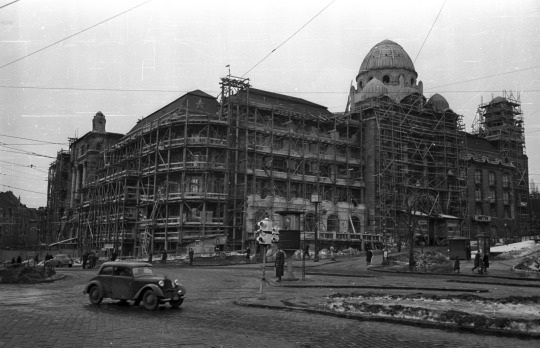
Gellért Hotel, St. Gellért square, Budapest, 1956. From the Budapest Municipal Photography Company archive.
95 notes
·
View notes
Photo

An anti-communist revolutionary holds a Molotov cocktail behind his back during the 1956 Hungarian Revolution.
41 notes
·
View notes
Link
Richard III is one of Shakespeare’s most controversial plays, often cited as the basis for the King’s reputation as a scheming murderer. But what do the Bard’s history plays tell us about the period they are set in and how that era was viewed in Shakespeare’s time? Are there allusions to Elizabethan figures in Richard III that Shakespeare knew his viewers would understand?
In this edition of Gone Medieval, Matt Lewis heads to Stratford-upon-Avon to catch up with director Greg Doran and Arthur Hughes - the first actor with a disability to play Richard III in a major production - to talk about the Royal Shakespeare Company’s new production of the iconic play.
#shakespeare#william shakespeare#richard iii#royal shakespeare company#rsc#matt lewis#greg doran#arthur hughes#gone medieval#podcast#history#medieval history#stephen greenblatt#tyrant#hungarian revolution#scrivener
8 notes
·
View notes